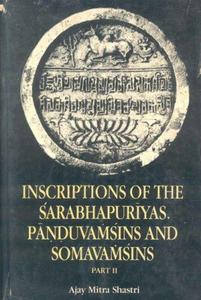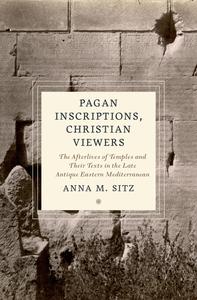- Книги
- 6-07-2023, 12:21
- 62
- 0
- voska89

Free Download Inscriptions of the Sarabhapuriyas, Panduvamsins and Somavamsins (Inscription of India Programme) By Ajay Mitra Shastri
1995 | 642 Pages | ISBN: 8120806379 | PDF | 71 MB
This work is a product of the Inscriptions of India Programme of the Indian Council of Historical Research undertaken with a view to making inscriptions dating from circa sixth to fourteenth century a.d. available in handy volumes. Part I studies the inscriptions of the Sarabhapuriyas, Panduvamsins and Somavamsins who played a major role in shaping the destinies of the Chhattisgarh region of Madhya Pradesh (Kosala) and the adjoining region of Orissa from about the sixth to the early twelfth century a.d. It provides a background to the study of the inscriptions by attempting to deal with their formal aspects like the format, palaeography, language, orthography, contents and methods of dating and to trace, for the first time, the evolution of their draft. Dharmasastra injunctions regarding the preparation of deeds of land-grants and their actual epigraphic parallels have also been discussed at length. The work sheds welcome light on the chronology and history of the region during the period in question and offers several original suggestions basing on fresh discoveries and new interpretation of known records. With its many interesting features, the work will surely be found enlightening by students and researchers delving deep into early Indian history and epigraphy.
Полная новость

Free Download Pagan Inscriptions, Christian Viewers: The Afterlives of Temples and Their Texts in the Late Antique Eastern Mediterranean (Cultures of Reading in the Ancient Mediterranean) by Anna M. Sitz
English | March 17th, 2023 | ISBN: 0197666434 | 352 pages | True EPUB/PDF | 36.04 MB
What did people in the early Christian period think about the pagan inscriptions filling their late antique cities? Like public advertisements lining our streets today, these inscriptions were everywhere and communicated specific messages to literate late Roman viewers, often providing a very different view of the classical past than that being preached from early Christian church pulpits. In Pagan Inscriptions, Christian Viewers, Anna M. Sitz provides a fresh perspective on the Christianization of the Roman empire from the fourth to the seventh century CE by analyzing a previously overlooked body of evidence: the many ancient, pagan inscriptions, written in Greek or other languages, which were reused, preserved, or even partially erased in this period.
Полная новость
